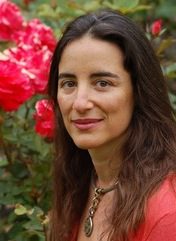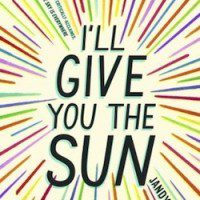I read Jandy Nelson’s I’ll Give You the Sun in a hurry. Not intentionally, but as a kind of physical reaction to good YA fiction, which can steal your breath and make your heart run marathons. There is something so desperately yearning in her characters, twins Noah and Jude, the way they need to be understood—superstitions, paint splatters, sexuality and all. Nelson describes the teenage years as their roughest and rawest.
Noah is an artist. He clicks with his mother but not his father, falls in love with a guy, wants to join a prestigious art school, and imagines his life in paintings, each scenario with a different title. Jude clicks with her father but not her mother, is a hypochondriac who believes in things like four leaf clovers and ghosts, doesn’t care about prestigious art schools, and makes art that doesn’t last very long. Of course, who they are flips throughout the story, both of them changing and drowning and clinging to a time when they were closer to each other. The book shifts between Jude at sixteen years old and Noah at thirteen, their stories interweaving while their future/ past actions are slowly revealed.
I’ll Give You the Sun reminds you of your relationships with the people around you. It reminds you of when you used to care about something irrelevant and pretty, like a dream you had that was overly ambitious, or a friend that you use to be extremely close to. It reminds you of a before and an after, how sometimes your life feels defined by specific actions and moments, like getting the job, moving cities, or leaving someone. Noah and Jude’s relationship forms the backbone of the story. Their defining moments with their parents, their friends, and teachers crumble and get rebuilt over and over. And it’s okay, because when there’s a before and after, afters always end up becoming something else’s before. Like Nelson writes, “Maybe we’re accumulating these new selves all the time. Hauling them in as we make choices, good and bad, as we screw up, step up, lose our minds, find our minds, fall apart, fall in love, as we grieve, grow, retreat from the world, dive into the world, as we make things, as we break things.”

Warning: tears will be shed. My mother gave me a weird look while I sobbed through the book at one in the morning. But it’s the most optimistic type of sadness, a sadness that makes you laugh and nudges you to think about colors and love. This book has received rave reviews. They’re already planning to turn the story into a film. I struggle to find something new to add, beyond my fifteen-year-old unadulterated enthusiasm. But I can say that Nelson’s writing is special. It breaks from the clichéd teenage angst romance, embracing the balance between naiveté and intelligence that many authors miss. Her words are strong and relentless, brimming with vulnerability and depth.
I think what I like most about Nelson’s writing is how seriously she values art. She places art in the story almost as an ever-present feeling. Nelson acknowledges how we are always creating artwork in our heads, imagining wild scenarios and presenting our emotions as self -portraits. She writes consciously of this, knowing how ambiguous and powerful emotions can be, because even joy and sadness can be entwined at times in our lives. The way that Jude and Noah make and destroy artwork is not just a metaphor for their real-life actions, but a way of surviving for them, even when everything feels lost.
Isn’t there something you want to say? Something you need to say? Because that’s what this is about. Nothing else. We wish with our hands, that’s what we do as Artists.
There’s something reckless about this book. Something that leaves you struck with awe. If you had everything, everything in the entire universe, how much would you give up for someone you love? Nelson reminds us to give them the sun. It feels pure and sweet and young to love so unironically and to give everything away, forgetting about consequences. Every after is also a before. Life is very cluttered, but people are made of people, and sometimes people are meant to be in the same story together.




